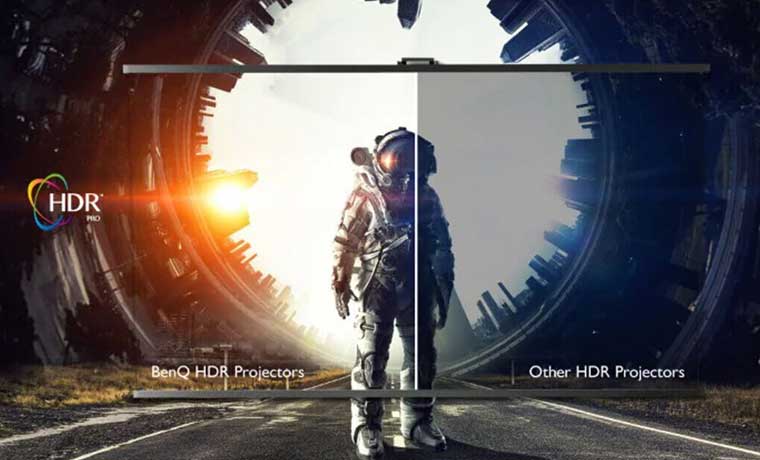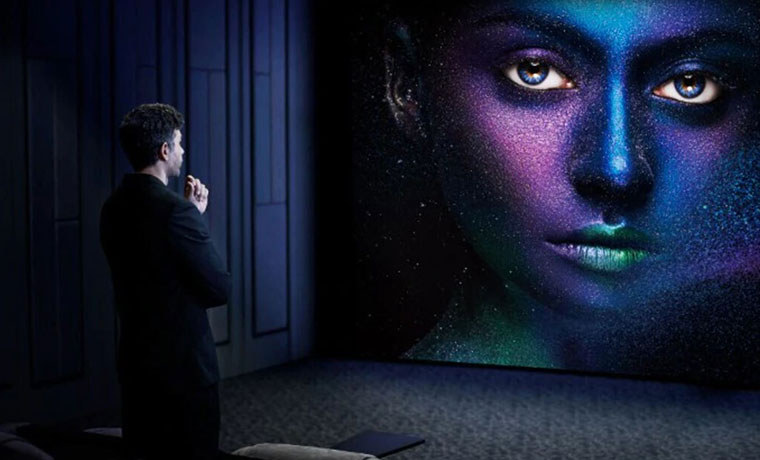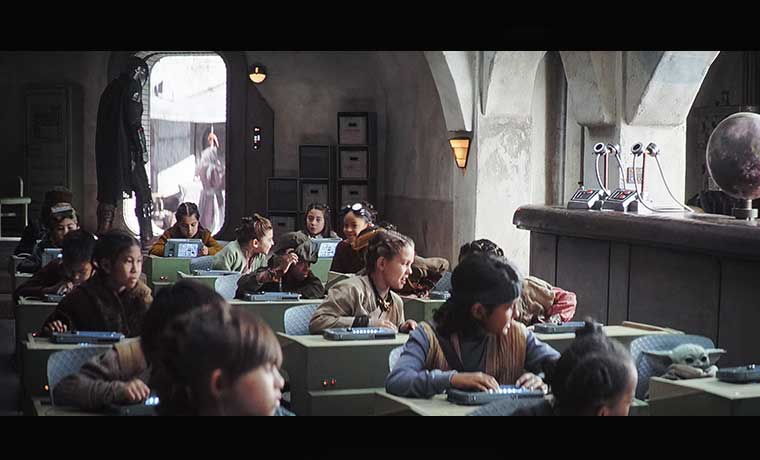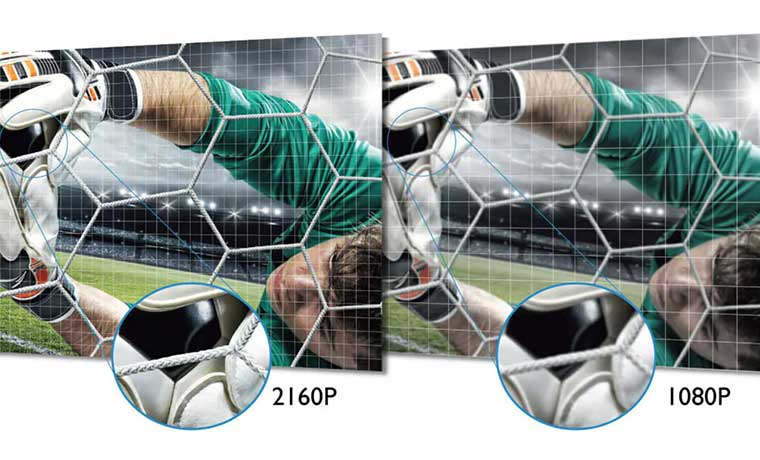The BenQ HDR-PRO implementation is made of three different components: HDR Brightness, Tone Mapping, and Dynamic Iris. The combination of these three features improves the TK850i’s picture by improving the projector’s dynamic range. For example, the TK850i can show the difference between bright and dark elements in the same scene.
#1 - HDR Brightness
The brightness of an HDR projector, unlike HDR monitors, is not based on fixed values from the signal assigned to it, but varies depending on the distance between the projector and the screen, screen size, and the material of the screen. Therefore, BenQ HDR-PRO projectors provide five different recommended HDR Brightness values for a range of popular home projector screen sizes (80”, 100”, 120”, 150”, and 200”). The TK850i is equipped with an HDR brightness control so users can change the brightness level based on their screen size to enjoy the best viewing experience.
When a projector can offer more dynamic range, additional details become visible, such as metallic surfaces, rock cliffs, and human hair. BenQ’s HDR-PRO technology works to reduce overexposure of light areas and avoid making dark areas too dim, with the goal of creating the best balance between the two and displaying the best image possible.
#2 - Tone Mapping and Color Mapping
BenQ’s HDR Tone and Color Mapping functions are designed to adjust and show the best image based on the individual projector specs. Since different devices have different specs, the color and brightness of a projected image might differ from the original content as it was intended to be shown. Many projectors are equipped with Color Mapping and Tone Mapping functions, and BenQ says that these features will present the best results by taking the specs of the projector itself into account. This means that BenQ HDR-PRO-equipped projectors are designed to make sure images being projected are all based on accurate calculations and precise projection, taking into account the specifications of the TK850i. By calculating based upon a projector’s component specifications, BenQ claims their HDR-PRO projectors can not only show more details, but also provide an improved dynamic range when it comes to both light and dark areas of the picture. This model-focused approach to calculating the best settings for light and dark areas of the picture means that the TK850i is able to provide a more authentic viewing experience that is closer to that of a cinematic release.
Wide color gamut is also crucial for HDR, and BenQ developed its own color management technology, called CinematicColor. It not only matches the wide color space set by the film industry, but also provides an exclusive, dedicated manual calibration mechanism to present images with accurate color, saturation, brightness, and color temperature. Coverage reaches about 98% Rec. 709 color gamut, and even meets the requirements of DCI-P3 cinematic wide color gamut. The Color Mapping function of the projector can also automatically adjust the color of HDR content to the richest and most accurate color in any condition.
#3 - Dynamic Iris
When asked what is the most critical component that makes up a good picture, the answer is, in most cases, color. Projectors that don’t produce accurate color are unable to reproduce the creator's vision. BenQ is an industry leader in color performance and it shows on the TK850i. In addition to color, the application of light and its effect on the image is equally important to the accurate re-creation of the creator's intent. According to BenQ,
“The contrast between light and dark can be used to enhance the realism of the overall image as well as intensify the feelings of awe and wonder. It can focus the audience’s attention.”
Think about how the contrast between light and dark in a scene can give an image a feeling of depth and realism. Contrasting elements give objects enhanced detail, which looks better to our eyes. Again from BenQ,
“The interplay between light and dark can take a two-dimensional image and give it a three-dimensional feel, giving the scene increased depth and infusing rendered surfaces with greater texture, all working together to strengthen the emotional power of cinema.”
The key to achieving most of this comes from performance of the BenQ Dynamic Iris.
A dynamic iris is situated between the projector lamp and lens. Depending on the overall brightness of the projected image, the iris opens or closes, adjusting the projected light. For bright images, the iris opens wider to allow more light, while for dark images, the iris closes to reduce the amount of light projected.
The engineering behind dynamic irises varies across a wide range of designs to achieve the contrast-boosting effect, from different brands and even among models from the same brand. Some projectors use an apparatus similar to a leaf shutter on a camera, with blades moving to increase or decrease the size of the iris based on the needs of the image. Other projectors employ a wheel-like instrument with a gradually shrinking aperture, which rotates to change the size of the opening to achieve the contrast-boosting effect.
Regardless of the type of design, a dynamic iris can increase or decrease the amount of projected light that passes through the lens from the projectors lamp.
The Dynamic Iris technology found on the TK850i works to enhance performance in terms of color, brightness, and contrast as part of their tone mapping technology. The BenQ Dynamic Iris technology allows the TK850i to create a wider dynamic range regardless of the original scene's brightness or darkness. With this technology, BenQ claims consumers get much clearer images that reveal details not seen with lesser projectors.








